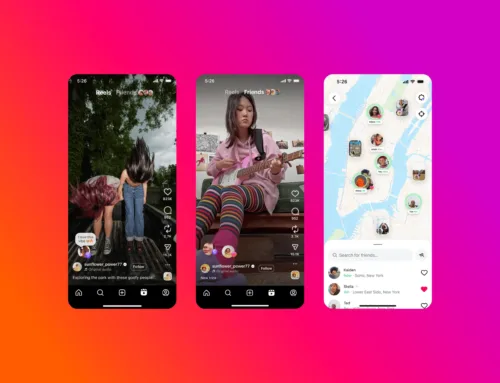Giving priority based on your target audience.
In today’s hyperconnected world, social media is more than just a tool for staying in touch—it’s a critical component of any successful business strategy. Choosing the right social media platform for your business is no longer optional; it’s essential for building a strong digital presence, engaging with your audience, and driving meaningful results. But with so many platforms available, from Instagram and TikTok to LinkedIn and Facebook, how do you decide where to focus your efforts?
The truth is, it’s not just about being present online; it’s about being present where it matters most to your audience. Different platforms attract different demographics, cater to unique content formats, and serve specific purposes. For instance, a visually-driven brand might thrive on Instagram, while a B2B-focused company might see better results on LinkedIn. Understanding these nuances is key to making an informed decision.
This article will walk you through the factors to consider when selecting the best social media platforms for your business. From analyzing your target audience to evaluating the type of content you create, we’ll provide actionable insights to help you craft a strategic and impactful online presence. By the end, you’ll have the clarity and confidence to focus your efforts on the platforms that truly align with your goals and drive growth.
Key Highlights:

Our amazing team is always hard at work
Understanding Your Business Goals
Before diving into specific platforms, it’s essential to clearly define your business goals. Are you aiming to increase brand awareness, drive traffic to your website, generate leads, or boost customer engagement? Each platform offers unique tools and features that align better with certain objectives. For instance, if brand awareness is your priority, platforms like Instagram and TikTok might be ideal due to their high reach and visual appeal. Conversely, if lead generation or professional networking is your focus, LinkedIn’s business-oriented audience could be more effective.
Your goals will also dictate the metrics you track. For example, if you’re aiming for engagement, metrics like likes, comments, and shares will be critical. If sales are the focus, you’ll need to measure conversions and click-through rates. Aligning your goals with the strengths of each platform ensures that your efforts are targeted and impactful.
Furthermore, your goals may evolve as your business grows, so flexibility is key. A small business looking to build brand recognition might prioritize Instagram initially, then shift to LinkedIn as it expands into B2B markets. Regularly revisiting your objectives ensures that your platform choices remain aligned with your long-term vision.
Finally, understanding your goals helps you allocate resources effectively. For example, achieving high-quality video content for TikTok may require different tools and expertise compared to managing a text-driven presence on Twitter. Defining your goals upfront allows you to invest in the right tools and strategies for success.
Identifying Your Target Audience
Understanding your target audience is foundational when choosing the right social media platform. Start by defining your audience demographics, such as age, gender, location, and interests. For example, younger audiences gravitate toward platforms like TikTok and Snapchat, while older professionals are more active on LinkedIn. Knowing these details helps you meet your audience where they already are, increasing the chances of meaningful engagement.
Behavioral insights are equally important. Consider how your audience interacts with content online. Are they passive scrollers, active commenters, or sharers? For instance, platforms like Instagram and Pinterest cater to visual content enthusiasts, while Twitter appeals to those who engage with trending topics and discussions. These behavioral traits guide how you structure your content and which platforms will yield the best results.
Don’t forget to consider psychographics—your audience’s values, preferences, and aspirations. Understanding these aspects helps you craft content that resonates on a deeper level, enhancing connection and loyalty. For example, a fitness brand targeting health-conscious individuals may thrive on Instagram, showcasing workout tips and success stories.
Lastly, audience preferences may shift over time, so ongoing research is crucial. Use analytics tools to keep track of changing audience behaviors and adjust your platform choices accordingly. By staying attuned to your audience’s evolving needs, you can maintain relevance and engagement.
Analyzing Each Platform’s Strengths
Every social media platform has unique strengths that cater to different types of businesses. Instagram is a highly visual platform, ideal for businesses in industries like fashion, food, or travel, where aesthetics are key. TikTok, on the other hand, is perfect for short, engaging videos that capture the attention of younger audiences. Facebook offers a broad reach and is great for community-building, while LinkedIn is unmatched for B2B networking and professional engagement.
Understanding these strengths allows you to align platform capabilities with your goals. For instance, if you’re launching a visually stunning product line, platforms like Instagram and Pinterest can help showcase your offerings effectively. Conversely, LinkedIn is better suited for thought leadership and sharing industry insights, helping you connect with decision-makers in your field.
Additionally, platforms like Twitter and YouTube cater to unique content types. Twitter thrives on real-time updates and discussions, making it ideal for brands looking to participate in trending topics or provide timely customer service. YouTube excels in long-form video content, perfect for tutorials, product demos, or storytelling.
Keep in mind that the strengths of platforms evolve as they introduce new features. For example, Instagram Reels and YouTube Shorts have shifted the dynamics of video marketing. Staying informed about platform updates ensures that you’re leveraging their strengths effectively.
Considering Content Type and Resources
Your choice of platform should reflect your ability to produce consistent, high-quality content. Visual-heavy platforms like Instagram and TikTok require a steady stream of eye-catching images and videos, while Twitter and LinkedIn are more suited to text-based updates, industry insights, and professional commentary. Understanding your content capabilities ensures that you can sustain a presence without overextending your resources.
Evaluate your team’s skills and tools. Do you have a graphic designer for creating polished visuals, or a video editor for producing engaging clips? If not, platforms that require less-intensive content creation, such as Facebook or Twitter, might be a better starting point. For example, a small business with limited resources might focus on creating written posts and customer testimonials for LinkedIn rather than diving into the fast-paced video demands of TikTok.
Content type also dictates the tone and style of your messaging. Instagram and TikTok often favor casual, entertaining, and authentic content, while LinkedIn calls for professionalism and expertise. Aligning your messaging with the norms of each platform enhances audience reception and engagement.
Finally, consider how frequently you can produce content. Some platforms, like TikTok and Instagram Stories, thrive on daily updates, while others, like YouTube or LinkedIn, can sustain longer gaps between posts. Choose platforms that align with your ability to consistently meet content demands.
Evaluating Engagement and Performance Metrics
Once you’ve established a presence on your chosen platforms, regularly evaluate performance metrics to ensure your efforts are paying off. Platforms like Instagram and Facebook offer built-in analytics to track metrics like impressions, reach, and engagement rates. Understanding these metrics helps you identify which strategies are effective and where adjustments are needed.
Engagement metrics, such as likes, comments, and shares, reveal how your audience is interacting with your content. High engagement often indicates that your content resonates, while low engagement signals a need for change. For example, if your audience isn’t engaging with long captions on Instagram, you might consider shifting to shorter, more visually-driven posts.
Beyond engagement, assess conversion metrics to determine how effectively your platforms are driving business outcomes. Metrics like click-through rates, leads generated, and sales conversions provide a clearer picture of your ROI. Tools like Google Analytics can help you track how social media traffic translates into website activity and customer actions.
Regularly reviewing performance metrics also allows you to identify trends over time. For example, you might discover that videos consistently outperform static images or that posting at certain times of day yields better results. Use these insights to refine your strategy and optimize future campaigns.
Making the Decision
After gathering insights on your goals, audience, platform strengths, content capabilities, and performance metrics, it’s time to make an informed decision. Focus on platforms that align most closely with your business objectives and where your target audience is most active. For instance, if your goal is brand awareness among Gen Z, TikTok might be the best choice, while a B2B company targeting industry professionals would find LinkedIn more effective.
Making the decision also involves narrowing down the number of platforms to manage. It’s better to have a strong presence on a few platforms than to stretch yourself too thin across many. Concentrate your efforts where they’ll have the greatest impact, ensuring you can deliver consistent, high-quality content and engagement.
Lastly, your decision should be dynamic. The digital landscape evolves quickly, and so do audience preferences and platform features. Regularly revisit your strategy and adjust your platform choices as needed to stay relevant. By staying flexible and informed, you can ensure that your social media efforts continue to drive meaningful results for your business.
FAQs About Choosing the Right Social Media Platform
Choosing the right social media platform for your business is more than a tactical decision—it’s a strategic investment in your brand’s digital future. By understanding your business goals, knowing your audience, and leveraging the unique strengths of each platform, you can build a targeted and impactful online presence. Whether you aim to boost brand awareness, drive sales, or foster community engagement, aligning your platform choices with your objectives ensures every effort contributes to your overall success.
Consistency and adaptability are key. It’s important to focus your resources on platforms where you can deliver quality content that resonates with your audience. At the same time, the digital landscape is ever-changing, and staying informed about new trends and platform updates is crucial. Regularly analyzing performance metrics and audience behavior allows you to refine your strategy, ensuring that your social media presence remains relevant and effective over time.
Ultimately, the platforms you choose should empower your brand to connect authentically, deliver value, and achieve measurable results. By making informed, strategic decisions, you’re not just meeting your audience where they are—you’re creating opportunities to grow, engage, and thrive in an increasingly digital world. Social media is a tool; how you use it can define your brand’s success..






